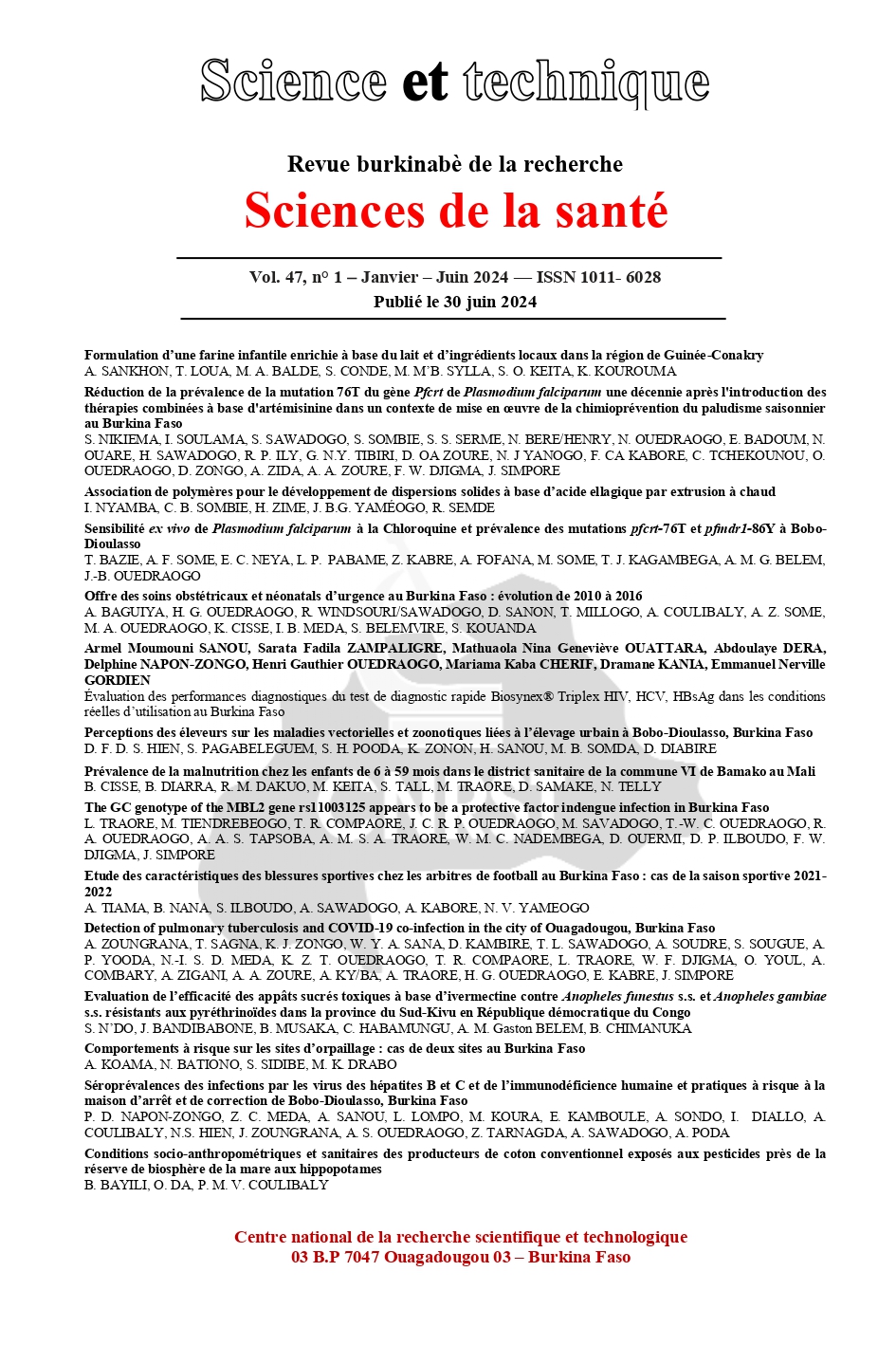Reduction in Pfcrt76T prevalence decade after introduction of the artemisinin-basedcombinations therapies in a context of seasonal malaria chemoprevention implementation in Burkina Faso
Keywords:
Malaria, Plasmodium falciparum,, Pfcrt76T,, resistance markers, Burkina FasoAbstract
In 2005, Burkina Faso introduced artemisinin-based combination therapies (ACTs) as a first-line treatment for uncomplicated malaria, following cases of resistance observed with chloroquine. A few years later, in 2012, the WHO recommended the use of seasonal malaria chemoprevention (SMC) as an effective strategy for reducing the burden of malaria in children under five. The aim of the present study was to assess the prevalence of the Pfcrt76T mutation associated with parasite resistance to quinolones, around a decade after the introduction of ACTs and a few years after the implementation of SMC in Burkina Faso.
A total of 403 volunteer patients were recruited in this study: 181 patients in the Banfora and Saponé health districts in 2013, around a decade after the introduction of ACTs, before the implementation SMC, and 222 children followed up during SMC in 2020, when it was implemented nationwide. Blood samples were collected for the preparation of blood smears for microscopic identification of parasites and for the preparation of blood spots to detect Pfcrt76T mutations by PCR/RFLP.
The prevalence Pfcrt76T was around 34% in our study in 2013. However, this Pfcrt76T prevalence was significantly reduced to 3.38% in 2020.
The study showed once again that a decrease in Pfcrt76T prevalence associated with parasite resistance to quinolones was observed from 2013 to 2020
Downloads
Published
How to Cite
Issue
Section
License
Copyright (c) 2024 Sciences de la Santé

This work is licensed under a Creative Commons Attribution 4.0 International License.

